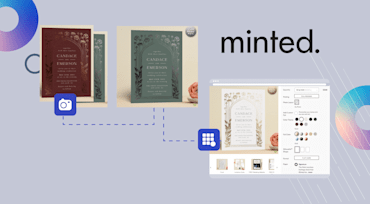As pandemic restrictions necessitated, many shopping trips in 2020 took place outside the traditional brick-and-mortar store, or at least void of the physical aisle-browsing experience. Same-day curbside pickup became a safe and convenient alternative, and e-commerce transactions skyrocketed as consumers shopped online. In fact, Digital Commerce 360 estimates that, compared to 2019, e-commerce transactions grew by more than 40% last year.
The “storeless” shopping environment promises to be a continuing trend even after we put COVID-19 in the rear view, prompting brands and retailers alike to up their game digitally. More intuitive websites, more engaging and eye-catching content, more informative product pages—all those approaches are now at the forefront of organizations’ minds as they strategize for success in e-commerce.
Product videos are one compelling way to capture the attention and consideration of shoppers. A study from Wyzowl found that 84% of consumers have been convinced to buy a product because of a video, which explains why many brands nowadays are adding that visual medium to their sites. Simple video footage of a shoe being walked in or a watch being worn, for example, can add significant context to a purchase decision.
However, what if your videos went a step further, not just creating a scenario in which shoppers can see themselves but actually enabling in-the-moment purchases? Shoppable videos make that possible.
What Started In a Music Video Is Now an Intuitive Way In Which Shoppers Engage
To find the origin of shoppable videos, I turned to Google and was transported back to May 2012, nearly nine years ago. A Fast Company article from then described the “world’s first interactive shoppable music video” from luxury retail brand SSENSE—the novelty of a video being ‘tagged’ with products, similar to tagging in a social-media post, and the unique ability to purchase items seen on the screen. SSENSE’s CEO Rami Atallah said, “People often wonder what performers are wearing, where they can purchase an item. We have bridged that gap.”
As consumers, we enjoy following the latest trends and seeing what celebrities are wearing so we can “shop the look.” That proverbial bridge has been extended even further since SSENSE’s video experiment, and now we can purchase everyday products through shoppable videos, too.
Shoppable videos are everywhere—across e-commerce websites and social-media channels—making it second nature to shop directly inside the content. At one time, Instagram and TikTok didn’t have ways for buying directly on the platform, but that’s no longer the case. You can now complete full transactions within the app through a video. According to Adweek, more than 90 million Instagram accounts “tap” to reveal tags on shopping posts every month.
In essence, videos have transformed from vehicles of passive viewership to those of active participation. Shoppable videos, in particular, enable shoppers to interact with the content itself and add items to a shopping cart or visit a product page. Those experiences meet shoppers where they are, shortening the purchase journey. No longer do they have to open a new tab, type a URL, or string together descriptive words in the search field in hopes of happening upon the product that just caught their eye. For brands or retailers, shoppable videos create more meaningful interactions and increase conversions while unlocking valuable user data as shoppers engage with the videos.
Adoption of Shoppable Video Might Have Been Slow at First, But Excitement Is Building
Three years after the debut of SSENSE’s shoppable music video, a 2015 blog post from Econsultancy, a U.K.-based digital-strategy firm, pointed to the fact that “we have yet to see widespread adoption” of shoppable video. That was because marketers “have trouble quantifying the return on investment,” and the production by a creative agency or production studio is “challenging to produce at scale.”
Fast forward four years, in 2019 Digiday dubbed shoppable video a “solution in search of a problem,” referencing agency feedback that adoption of the ad format was slow because of standardization and pricing ambiguities.
However, as 2020 drew to a close, the Interactive Advertising Bureau (IAB) released its annual report on the consumer ecosystem, stating that the “percentage of marketers who use shoppable-video ads is set to grow to 40% this year, from 33% in 2019 and 25% in 2018, as advertisers seek to boost direct sales.” Separately, a January study commissioned by Bazaarvoice with Savanta found that, according to 24% of consumers over the age of 18, shoppable images and video dominated as the most influential ad or content type on social media. Surprisingly, shoppable images and videos scored much higher than “try-on haul” videos from influencers they follow (5.6%) and posts from brands (13.4%).
If you start digging for examples of shoppable video, it won’t take long to find a treasure trove of content from which to draw inspiration. Here are a few of my favorites:
- Ted Baker’s #TEDPRESENTS “fantastical film”
- Fashion influencer Jenny Cipoletti’s interactive branded holiday shopping quiz with Pandora and Us Weekly
- E-commerce brand Sunnysoc™’s “Shop the Collection” video on its Shopify site
- PayPal’s sponsored shopping segment with E! Online’s Daily Pop and NBCUniversal Checkout.
Shoppable Videos Are Changing E-Commerce
Every video can be a shoppable video. Despite hurdles encountered years ago, it can now be easy and effortless to implement with the right technology. For further reading on shoppable video, check out the following resources:





